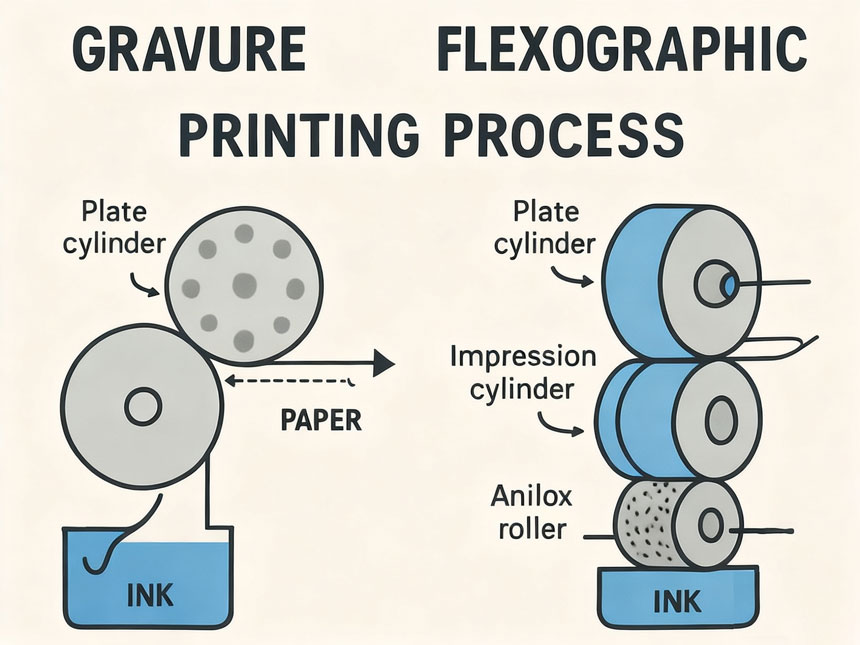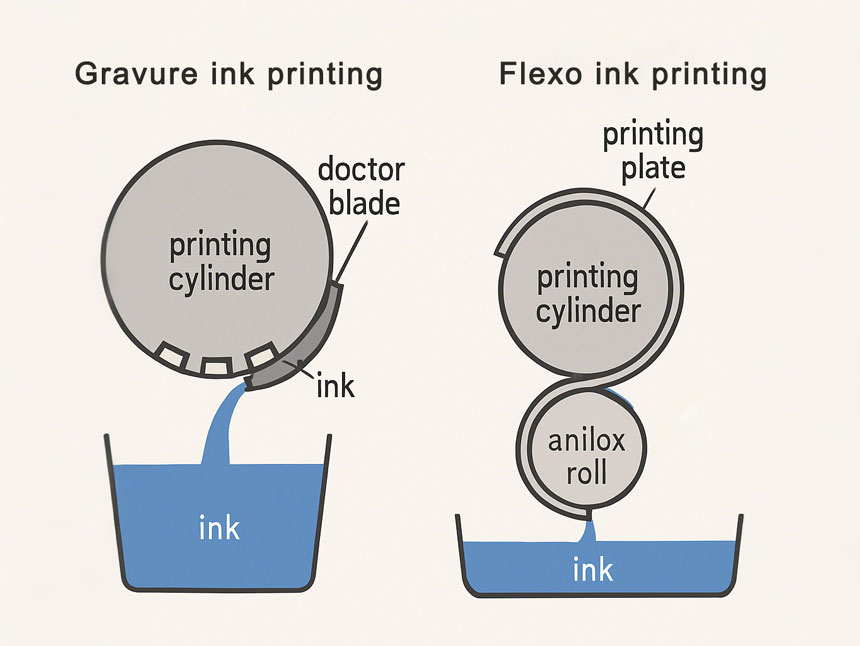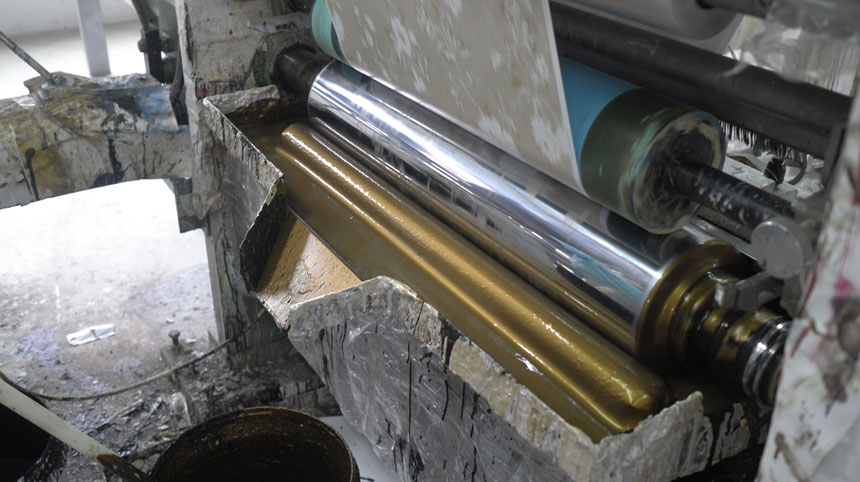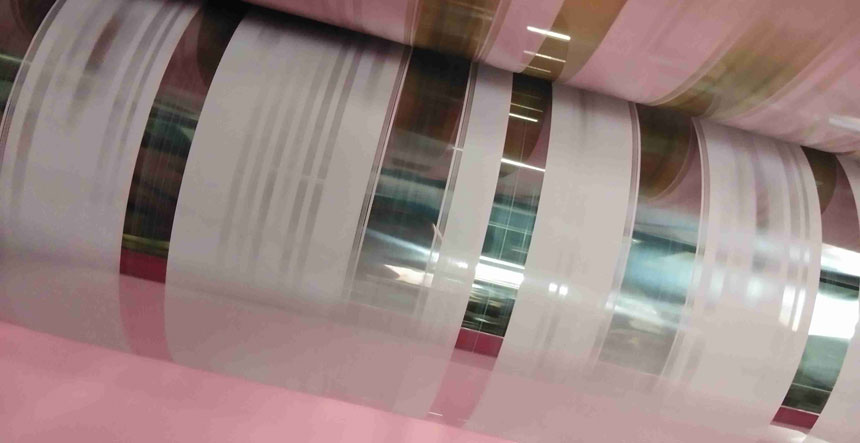categories
recent posts
Engineer. Jason | Senior Ink Technology Specialist | 20 Years Industry Experience
Gravure and flexographic inks are essential in the printing industry. They serve different purposes and have unique characteristics. Understanding these differences is crucial for professionals in the field, especially when selecting specialized ink pigment and ink binder formulations.
Gravure printing is an intaglio process, where images are engraved onto a cylinder. This technique excels in producing fine details and consistent color quality. It's ideal for high-volume projects requiring premium organic pigment and aluminum pigment effects.
Flexographic printing, or flexo printing, uses flexible plates. It's a type of relief printing known for speed and versatility. Flexo can print on various materials, including plastic and paper, and works well with various ink resin formulations.
Here are key distinctions between the two:
· Gravure: Engraved cylinders, high setup costs, detailed prints, ideal for pearlescent pigment (Hot selling type: Silver white pearl pigment. Highly recommend silver white 8300 pearl pigment: the price is much lower than the same model ME100 on the market, but it is brighter, whiter and of better quality.) applications
· Flexo: Flexible plates, lower setup costs, adaptable to substrates, suitable for fluorescent pigment effects
Gravure is often used in packaging and wallpaper. Flexo caters to labels, newspapers, and many packaging types. Understanding these methods aids in choosing the right print process and appropriate ink additives.

How Gravure and Flexographic Printing ink machine works
Gravure inks are mostly solvent-based, known for their vibrant colors. The ink fills engraved cells on a cylinder. As the cylinder rotates, excess ink is removed and transferred to the substrate. These inks often incorporate specialized CPP resin for better adhesion.
Flexographic inks offer more options; they're water-based, solvent-based, or UV-curable. This versatility suits many substrates and faster production speeds. Flexo plates transfer ink directly onto the surface, often using polyamide resin as a key component.
Here's how they differ in their working:
· Gravure: Solvent-based, cylinder engraving, precise ink transfer, works well with CEVA resin
· Flexo: Multiple ink types, direct plate transfer, quick-drying, compatible with PVB resin and other ink binders
Gravure inks require drying, often using more energy. Flexo inks dry rapidly, boosting efficiency. The choice of ink impacts the print quality and production speed, tailoring to specific needs. Both may require UV stabilizer and UV absorber additives for outdoor applications.

How Flexographic Inks and gravure inks Work?
Gravure inks are typically solvent-based, known for high-quality images and vibrant colors. They excel in producing fine details and gradients, crucial for premium products. However, they demand a drying process that can be energy-intensive. These inks work exceptionally well with chameleon pigment for special effects.
Flexographic inks, on the other hand, offer more versatility. They can be water-based, solvent-based, or UV-curable, adapting well to various substrates. This flexibility means they dry faster, boosting production speed considerably. They effectively utilize glitter powder and reflective powder for eye-catching designs.
Here are the key differences at a glance:
· Gravure Inks: Solvent-based, vibrant colors, intricate details, ideal for pearlescent pigment effects
· Flexo Inks: Versatile ink types, fast drying, adaptable to various materials, suitable for fluorescent pigment applications
Gravure inks provide superior color consistency, ideal for large, continuous print runs. Flexo inks have improved over the years, making them competitive in terms of quality, especially for shorter runs. Choosing the right ink depends on project specifics like run length, quality demands, and substrate variety, as well as the required ink resin and ink binder properties.
Gravure printing is ideal for high-volume packaging applications. It's often found in the production of wallpaper, gift wrap, and magazines. This is due to its excellent image reproduction and ability to maintain consistency throughout long runs, especially when using premium aluminum pigment and pearlescent pigment.

Pearl inks (made by gold pearlescent pigments) in Gravure printing ink machine
Flexographic printing shines in flexibility and cost-effectiveness. It's widely used for printing labels, packaging, and even newspapers. Its adaptability to diverse substrates like plastic and foil contributes to its popularity, particularly with versatile ink additives and other ink binders.
Here's a quick snapshot of typical applications:
· Gravure Printing: High-volume packaging, magazines, wallpaper, applications requiring chameleon pigment effects
· Flexo Printing: Labels, diverse packaging, newspapers, products using glitter powder and reflective powder
Each method has unique strengths, lending itself to specific uses based on the printing demands and required ink pigment characteristics.
Cost plays a crucial role in choosing a printing method. Gravure printing demands high setup costs due to expensive engraving of cylinders. However, it's efficient for lengthy print runs as the per-unit cost declines significantly with volume, especially when using cost-effective ink resin formulations.
Flexographic printing, in contrast, boasts lower initial setup expenses. This makes it ideal for short to medium print runs. The faster turnaround and flexibility of plate production boost its appeal for quick projects requiring specialized ink additives.
Factors to consider in cost analysis include:
· Initial Setup Costs: Gravure is higher
· Per-Unit Cost for Long Runs: Gravure becomes more economical
· Turnaround Speed and Flexibility: Flexo excels in quick changes
· Material Costs: Varies based on ink binder and ink pigment selection
The environmental footprint of printing processes is increasingly important. Flexographic inks often boast eco-friendly formulations. Many are water-based or UV-curable, reducing harmful emissions significantly, especially when paired with appropriate UV stabilizer and UV absorber additives.
Gravure inks, traditionally solvent-based, demand efficient drying methods. This process tends to consume more energy, raising concerns about its environmental impact. However, newer formulations with improved CPP resin and polyamide resin are addressing these concerns.
When considering sustainable practices, flexographic inks often have an edge. Factors to analyze include:
· Eco-Friendliness: Water-based flexo inks are preferable
· Energy Consumption: Gravure's drying process is energy-intensive
· Emissions: Solvent-based inks release volatile organic compounds (VOCs)
· Material Sustainability: Impact of ink pigment and other ink binders on recyclability

Gravure ink
Print quality is crucial in determining the best ink system. Gravure printing is renowned for its ability to produce high-resolution images. The fine detail and color gradations are ideal for luxury prints using premium pearlescent pigment and chameleon pigment.
Flexographic printing has improved significantly in recent years. It now competes well with gravure for many applications. The quality can be exceptional, especially for simpler designs and high-speed jobs utilizing advanced ink resin formulations.
Substrate compatibility is another key aspect. Each method has different capabilities:
· Gravure Printing: Suited for paper and films, works well with aluminum pigment and organic pigment
· Flexographic Printing: Versatile with plastic, foil, and paper, ideal for fluorescent pigment and reflective powder applications
Ultimately, the choice depends on the specific requirements of the project and the necessary ink binder properties.
|
Feature |
Gravure Inks |
Flexographic Inks |
|
Printing Method |
Intaglio (recessed cylinders) |
Relief (raised plates) |
|
Ink Types |
Mostly solvent-based |
Water, solvent, or UV-based |
|
Setup Cost |
High |
Low to moderate |
|
Production Speed |
Moderate to high |
High to very high |
|
Print Quality |
Excellent detail and color |
Good to very good |
|
Best For Run Length |
Long runs |
Short to medium runs |
|
Substrate Versatility |
Limited |
Excellent |
|
Environmental Impact |
Higher (solvent emissions) |
Lower (water-based options) |
|
Special Effects |
Pearlescent pigment, chameleon pigment |
Glitter powder, fluorescent pigment |
|
Common Resins |
CPP resin, CEVA resin |
Polyamide resin, PVB resin |
Selecting the right ink hinges on several factors. Consider the run length, desired quality, and substrate type. Gravure is best for high-volume and detail-oriented tasks requiring premium ink pigment effects.
Flexo printing suits diverse materials and quicker turnarounds. It's vital to align your choice with project goals and consider the appropriate ink additives and other ink binders. Evaluate your priorities carefully to ensure optimal results and satisfaction.
Understanding the differences between gravure and flexographic inks can greatly benefit printing projects. Each method and ink type has its unique strengths and limitations. Gravure excels in image quality and detail, making it ideal for high-volume tasks where aesthetics are paramount, especially when using specialty ink pigment options.
Conversely, flexo printing offers versatility and faster production speeds across a wide range of substrates. This makes it preferable for variable and lower-cost productions utilizing flexible ink resin systems. By assessing your specific requirements and project goals, you can select the most suitable printing method for your needs. This ensures both quality results and efficient production with the right ink binder and ink additives.
the professional team to service !